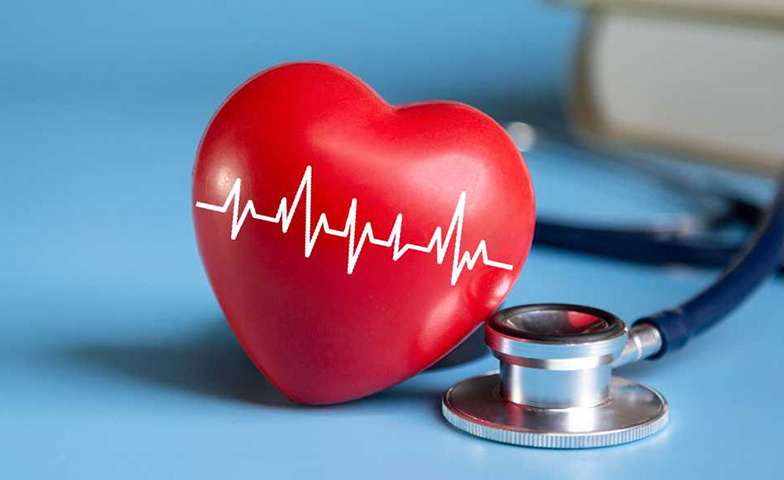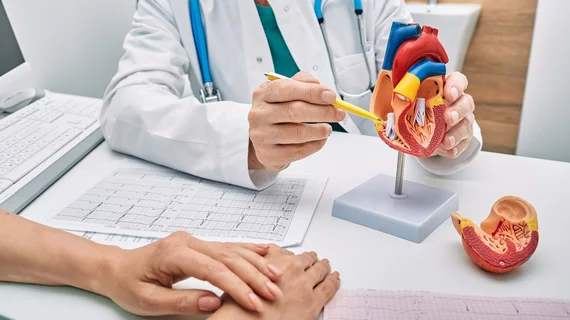Lifelong heart habits from Dr Garcia you can adopt today
Lifelong heart habits from Dr Garcia you can adopt today
Blog Article
Understanding the Significance of Cardiology in Modern Health Care Services
Cardiology plays a vital function in contemporary healthcare, particularly as heart disease continues to be the leading root cause of mortality worldwide. Advancements in diagnostics and treatment have actually transformed individual care, enabling earlier treatments and improved end results. The change towards precautionary cardiology equips individuals to manage their wellness proactively. As modern technology continues to progress, the combination of innovative solutions may further redefine cardiology's effect on public health and wellness, prompting a closer exam of arising patterns and their ramifications.
The Occurrence of Heart Problem and Its Influence On Public Health
Heart disease stays the leading reason of death worldwide, its impact expands much past individual patients to affect public health and wellness systems and economies. The high occurrence of heart problem puts a significant stress on medical care sources, requiring raised funding for avoidance, recovery, and therapy programs. Public wellness campaigns have to attend to danger variables such as weight problems, smoking, and sedentary way of livings, which contribute significantly to the climbing occurrence of heart conditions.Moreover, the financial burden connected with heart disease is enormous, including not only direct clinical expenses however likewise indirect costs associated to shed productivity and early mortality. Areas encounter obstacles in managing these prices, frequently bring about differences in medical care gain access to and results. As the populace ages and lifestyle-related dangers continue to escalate, the seriousness for effective cardiology interventions comes to be extremely important. Consequently, dealing with heart problem is not just an issue of private wellness yet likewise a crucial public health priority.
Breakthroughs in Cardiac Diagnostics and Imaging Techniques
Recent improvements in heart diagnostics and imaging techniques have revolutionized the field of cardiology, improving the capability to check and identify heart conditions. Strategies such as heart MRI, CT angiography, and echocardiography have ended up being progressively innovative, offering thorough photos of heart structures and features. These methods permit the very early identification of conditions like coronary artery illness, cardiac arrest, and valvular disorders.Moreover, developments in non-invasive diagnostics, such as wearable modern technology and remote monitoring tools, have actually empowered individuals and health care suppliers. These devices assist in real-time monitoring of heart rhythms and other necessary signs, bring about timely treatments. Furthermore, synthetic intelligence is being integrated right into imaging evaluation, enhancing accuracy and effectiveness in diagnosis.
Advancements in Therapy Options for Heart Issues
Current developments in cardiology have resulted in considerable innovations in therapy options for heart disease. These consist of innovative surgical methods that enhance step-by-step end results and emerging medicines that provide brand-new methods for treatment. As the field progresses, these innovations play an essential role in improving patient care and end results.
Advanced Surgical Techniques
Innovations in surgical methods have changed the landscape of cardiology, using new wish for clients with heart disease. Minimally intrusive procedures, such as catheter-based treatments, have substantially lowered healing times and hospital keeps. Methods like robotic-assisted surgery improve accuracy, permitting specialists to browse complicated anatomical structures with higher accuracy. Moreover, innovations in imaging modern technology help with real-time visualization throughout procedures, boosting end results. Transcatheter aortic shutoff substitute (TAVR) exemplifies a breakthrough in treating aortic constriction, making it possible for shutoff substitute without open-heart surgical treatment. Additionally, hybrid strategies that incorporate medical and catheter-based approaches provide customized solutions for numerous heart issues. These sophisticated surgical techniques not just improve client safety yet likewise expand treatment alternatives, underscoring the important function of innovation in modern-day cardiology methods.
Arising Medicines and Treatments
As the landscape of cardiology proceeds to progress, arising treatments and medicines play a pivotal function in enhancing treatment choices for heart conditions. Developments such as novel anticoagulants and progressed lipid-lowering representatives have changed the monitoring of heart diseases, significantly lowering person morbidity and death. Furthermore, the advancement of genetics therapies and regenerative medicine supplies promising opportunities for dealing with problems formerly regarded irreparable. Clinical tests are continually disclosing the efficacy of these treatments, pushing the boundaries of standard therapies. Furthermore, the combination of digital health innovations facilitates individualized medication, permitting tailored therapy strategies based on hereditary and way of living variables. Collectively, these developments underscore the dynamic nature of cardiology, boosting patient results and redefining criteria of care in contemporary health care.
The Duty of Preventive Cardiology in Client Treatment
Preventive cardiology plays an important duty in individual treatment by focusing on the identification of risk elements that add to heart problem. With way of life adjustment strategies and very early discovery techniques, doctor can efficiently minimize the occurrence of cardiovascular events - Dr Garcia. This aggressive method not just enhances individual results however likewise advertises lasting wellness
Risk Variable Identification
While heart diseases continue to be a leading reason for morbidity and death worldwide, reliable threat element identification serves as a cornerstone of precautionary cardiology. Recognizing threat variables such as hypertension, family, hyperlipidemia, and diabetes mellitus background is crucial for early treatment. Medical care professionals use numerous evaluating methods to examine these elements, enabling customized safety nets. Furthermore, recognizing a person's way of living selections, such as cigarette smoking and physical lack of exercise, further educates threat assessments. This comprehensive assessment enables medical professionals to establish individualized treatment plans intended at mitigating risks. By focusing on danger variable recognition, medical care systems can enhance individual outcomes and reduce the general concern of heart diseases, ultimately adding to enhanced public health and wellness methods and source allowance.
Lifestyle Adjustment Methods
A wide variety of studies highlights the vital duty of lifestyle modification techniques in decreasing cardio illness risk. These methods incorporate nutritional adjustments, raised exercise, smoking cigarettes cessation, and weight management. By taking on a heart-healthy diet plan rich in fruits, veggies, whole grains, and lean healthy proteins, people can lower cholesterol degrees and high blood pressure. Regular physical activity strengthens the heart and enhances total cardiovascular health and wellness. Additionally, quitting cigarette smoking greatly minimizes the threat of cardiovascular disease and enhances recovery prices for those with status quo. Weight administration additionally adds to cardio wellness by minimizing other danger variables such as diabetes mellitus and hypertension. Applying these lifestyle transforms not only advertises private health yet additionally acts as a keystone of precautionary cardiology in individual treatment.
Early Discovery Strategies
Way of living alterations greatly add to lowering cardiovascular illness risks, however they are most effective when combined with very early detection strategies. Preventative cardiology emphasizes the value of recognizing possible heart issues before they rise right into serious problems. Methods such as high blood pressure surveillance, cholesterol screening, and progressed imaging technologies like echocardiograms play essential roles in examining cardio health and wellness. Biomarkers and hereditary testing likewise boost the precision of very early discovery, enabling for tailored preventive methods. Normal cardiac risk evaluations empower medical care companies to interfere proactively, possibly preventing cardiovascular disease and strokes (Cardiology). By integrating these early discovery approaches right into routine treatment, individuals can gain from timely lifestyle interventions and targeted treatments, eventually enhancing results and improving high quality of life
Integrating Modern Technology Into Cardiology Practices
As advancements in innovation proceed to improve various fields, the assimilation of innovative devices and systems into cardiology techniques has actually come to be important for enhancing client treatment and results. Telemedicine platforms permit cardiologists to monitor clients from another location, enhancing access to care while decreasing go now the burden on medical care centers. Wearable devices, such as smartwatches, allow continuous heart price surveillance, notifying both individuals and medical professionals to potential problems in real-time. Additionally, man-made intelligence (AI) is being utilized to examine huge quantities of cardiac information, helping in very early diagnosis and tailored treatment strategies. Advanced imaging methods, consisting of 3D echocardiography, improve visualization of heart frameworks, resulting in a lot more accurate treatments. Digital wellness documents (EHRs) simplify individual information monitoring, making sure that cardiologists have immediate access to critical information. Together, these technical developments are transforming cardiology, advertising proactive monitoring and improved health end results for people with cardiovascular problems.
The Relevance of Individual Education And Learning and Interaction
Client education and involvement play an essential function in the management of cardio health. By furnishing people with knowledge about their conditions, treatment options, and lifestyle modifications, doctor equip individuals to take an energetic duty in their treatment. This positive method can cause improved adherence to prescribed medications, nutritional modifications, and exercise programs, ultimately decreasing the danger of complications.Engagement additionally promotes a strong patient-provider connection, motivating open communication and depend on. When individuals really feel informed and involved, they are more probable to voice issues and ask inquiries, which can bring about much better medical outcomes. Additionally, instructional resources, such as workshops or electronic platforms, can improve understanding and advertise self-management methods. In general, focusing on client education and learning and interaction is crucial for boosting cardio health and wellness, improving high quality of life, and decreasing medical care prices connected with cardio diseases.
Future Patterns in Cardiology and Their Potential Effect

Regularly Asked Questions
What Way Of Life Modifications Can Decrease Heart Disease Risk?
The present concern addresses way of life adjustments that can significantly reduce heart illness risk. Cardiology Jupiter. Adopting a well balanced diet regimen, participating in normal physical activity, keeping a healthy and balanced weight, taking care of stress, and preventing tobacco can notably enhance cardio wellness
How Can I Recognize Early Indicators of Heart Issues?
Identifying very early indications of heart issues involves surveillance signs such as upper body discomfort, lack of breath, fatigue, and irregular heart beat. Prompt awareness of these indications can prompt necessary clinical examination and intervention for much better results.
What Are the Differences In Between Cardiologists and Cardiac Surgeons?
The differences in between cardiologists and heart cosmetic surgeons hinge on their roles; cardiologists mainly handle and detect heart disease via non-invasive approaches, while cardiac surgeons execute medical procedures to fix architectural heart concerns. Each plays an important, distinct role.

Exactly how Typically Should I Get My Heart Wellness Checked?
The frequency of heart checkup varies based on Discover More Here individual risk variables. Typically, adults need to undertake assessments each to two years, while those with current problems may require even more constant analyses as recommended by health care professionals.
What Role Does Genes Play in Heart Disease Risk?
Genetics significantly influences heart problem threat, with familial patterns showing acquired conditions. Particular genes can incline individuals to high blood pressure, cholesterol problems, and various other cardiovascular issues, highlighting the relevance of genetic screening in reviewing heart health. Heart condition stays the leading reason of fatality globally, click over here now its impact expands far past individual patients to influence public wellness systems and economies. Public wellness efforts need to deal with danger aspects such as excessive weight, smoking, and inactive way of lives, which contribute greatly to the increasing incidence of heart conditions.Moreover, the economic concern connected with heart condition is enormous, including not just straight clinical prices but also indirect expenses connected to lost productivity and early mortality. Preventative cardiology plays a necessary duty in patient treatment by focusing on the identification of threat factors that contribute to heart disease. Artificial intelligence (AI) and maker understanding are enhancing diagnostics and client surveillance, making it possible for early discovery of heart illness. The differences between cardiologists and heart doctors lie in their roles; cardiologists largely take care of and detect heart problems through non-invasive approaches, while heart cosmetic surgeons carry out surgical treatments to correct structural heart problems.
Report this page